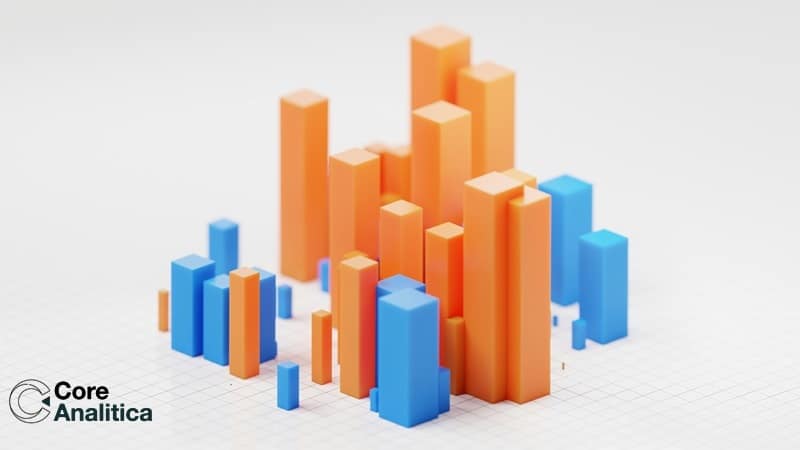
Analyzing the bar/column chart: one of the most used visuals for business
Data visualization is an essential tool in the information age, and among the numerous forms available, bar or column charts stand out as a versatile and powerful visual. These graphs offer a clear and accessible visual representation of complex data sets, allowing individuals and organizations to understand, interpret and communicate information effectively. We might say that this type of visual is probably one of the most commonly used in business contexts because of their versatility and ease of communication.
The essence of bar charts lies in their ability to present data intuitively. Using bars with lengths proportional to the values they represent, these graphs simplify the information, making it easy to understand even for those without technical experience. This clarity is essential in environments where communicating data to diverse audiences is crucial.
Comparing data is one of the strengths of bar charts. In fields such as sales analysis, these charts allow you to easily visualize and compare the performance of different products or regions. This comparison capability makes it easy to identify patterns and trends, providing valuable information for strategic decision making.
In the temporal context, where line charts are probably the best choice, bar charts are also useful, allowing us to arrange the bars on a chronological axis. This temporal representation allows us to analyze the evolution of data over time, identify seasonal peaks, and better understand fluctuations in different periods. Their usefulness in areas such as financial analysis, where time evolution is essential, underlines the versatility of these charts.
The ability to handle large data sets is another distinguishing feature of bar charts. While other forms of visuals can become complex and confusing with extensive data, bar charts maintain their clarity and make it easy to identify patterns, making them a valuable tool for exploring large databases.
The versatility of bar charts is manifested in their ability to represent both categorical and numerical data simultaneously. This feature allows complex scenarios to be addressed where the relationship between different variables must be communicated effectively. For example, in survey studies, bar graphs can represent the preferences of different groups based on multiple variables.
In business decision making, bar charts offer a complete view of key metrics. By representing financial or performance data, these charts make it easy to identify areas for improvement, analyze profitability, and compare results with pre-established objectives.
Bar charts also play a crucial role in identifying patterns and anomalies. Its ability to display data in a comparative and detailed manner allows analysts to identify emerging trends, significant changes, and areas of interest that may require further exploration.
In education, bar graphs are valuable tools for teaching statistical concepts and improving students’ understanding of the visual representation of data. Their simplicity and ability to illustrate abstract concepts make them an ideal choice for introducing students to the world of data analysis.
In conclusion, displaying bar or column charts not only simplifies data representation but also unlocks the ability to understand and make decisions. From sales analysis to exploring large data sets, these graphs stand as fundamental tools across various disciplines, allowing individuals and organizations to extract meaningful insights from the overwhelming amount of information available in the modern era. Their versatility, simplicity and effectiveness consolidate them as an essential pillar in the communication and understanding of data.
Recent Posts
- Beyond the Rear-View Mirror: How Modern Analytics Is About Predicting the Future, Not Just Reporting the Past
- “What If…?” — Moving from Static Dashboards to Strategic Conversations with Your Data
- The Power BI Revolution: Why Giving Data to Everyone Is the Smartest Business Move
- Why Your Data “Plumbers” Are Your Most Valuable Growth Asset
- Data-Driven or Data-Overwhelmed? How to Build a Culture That Actually Uses Analytics

